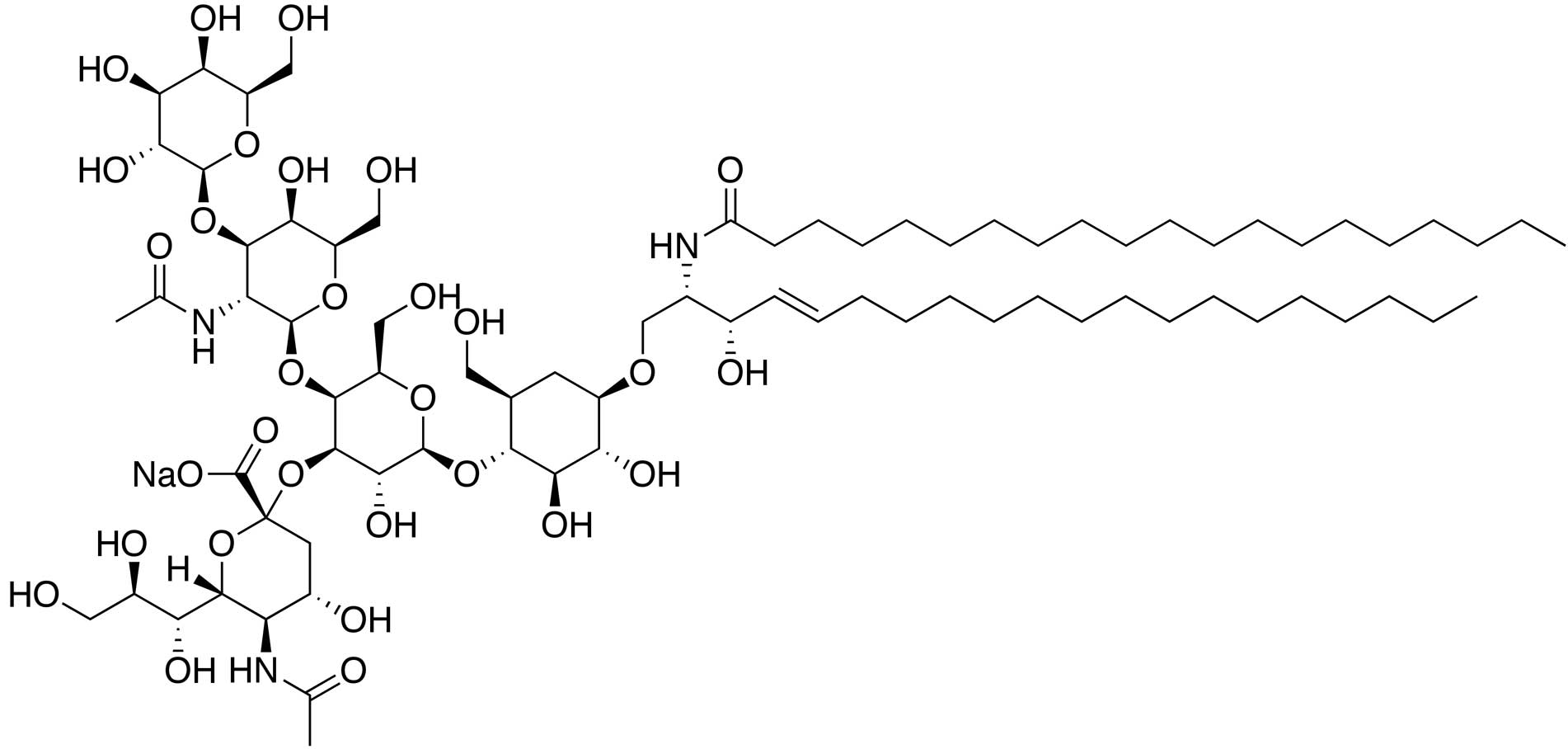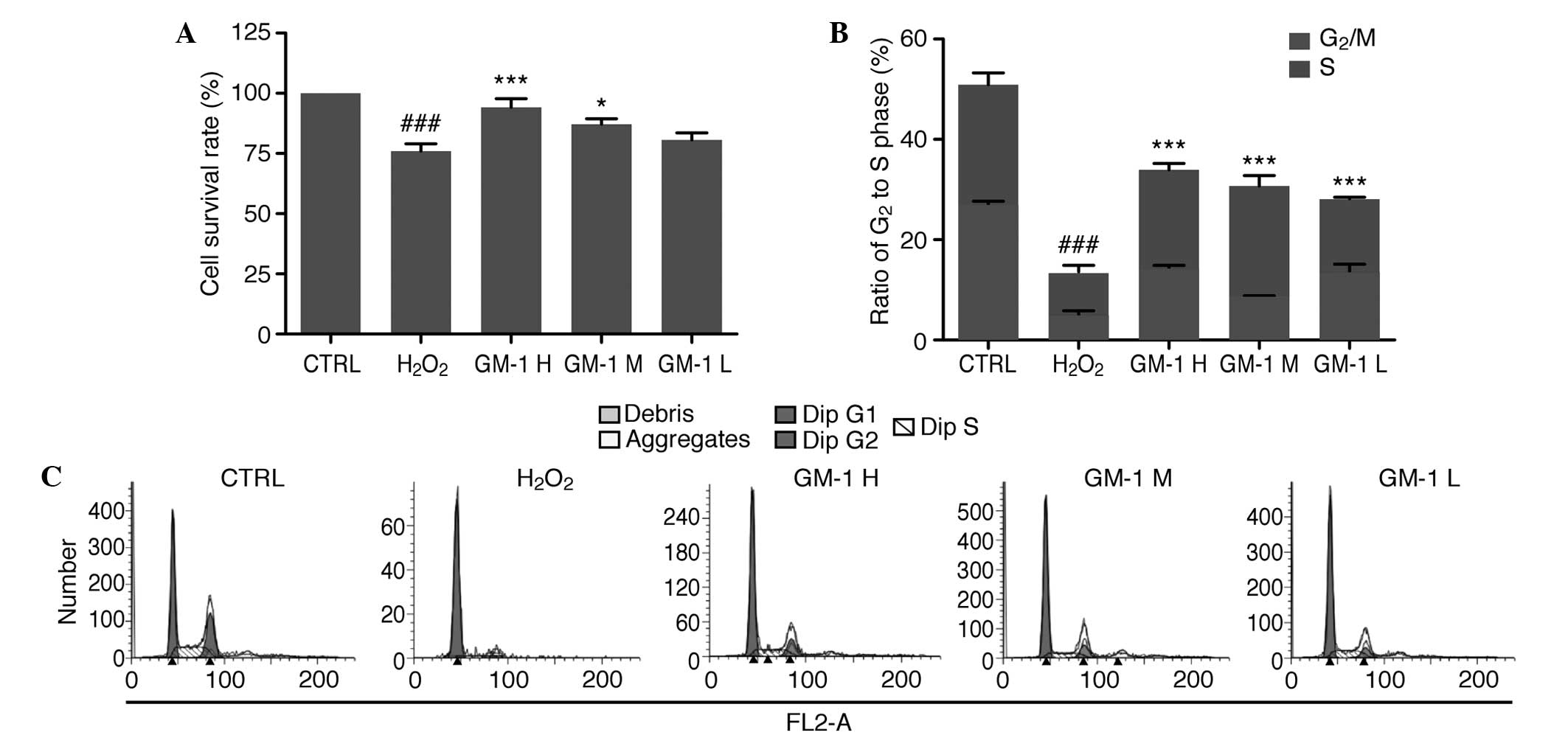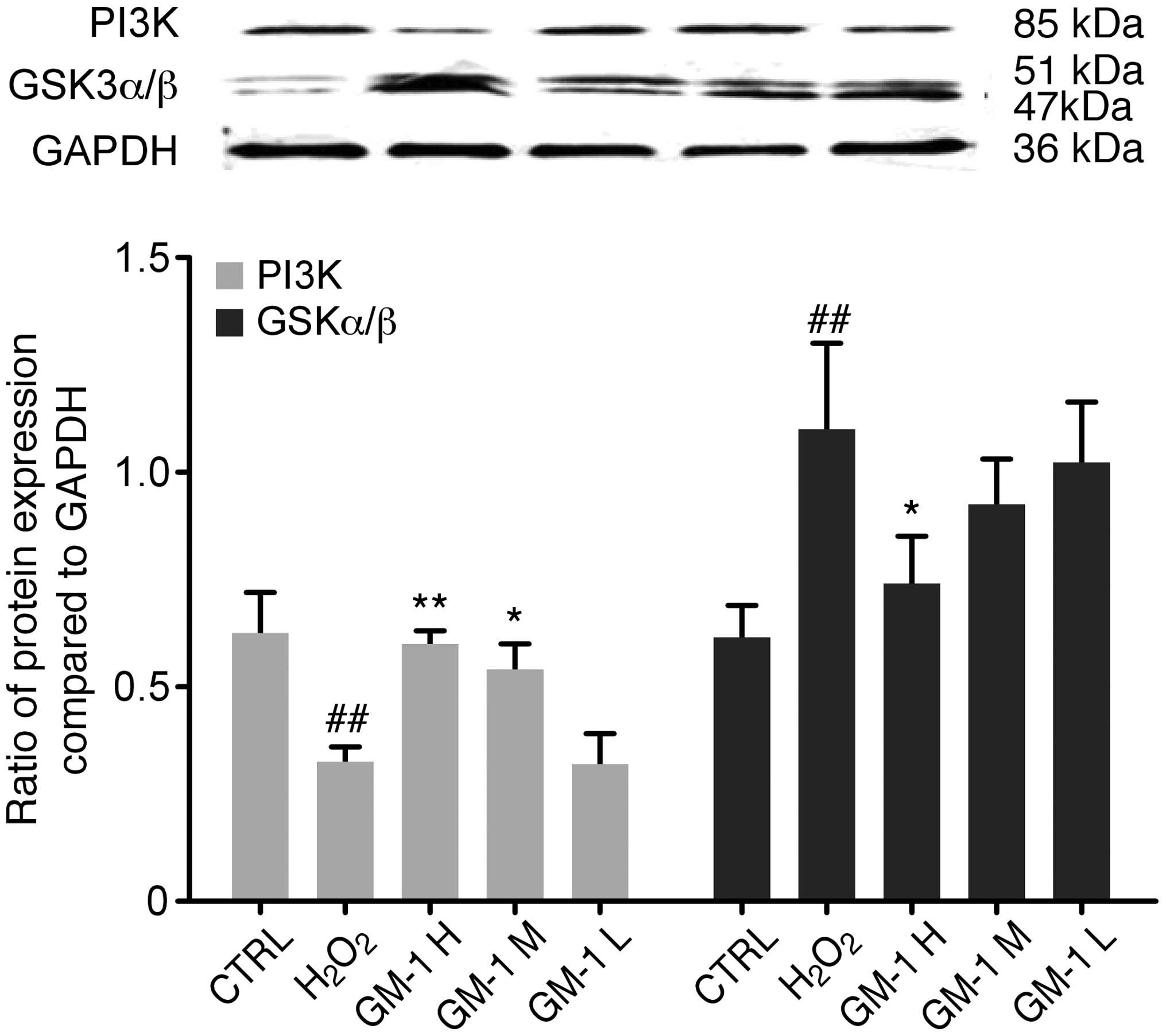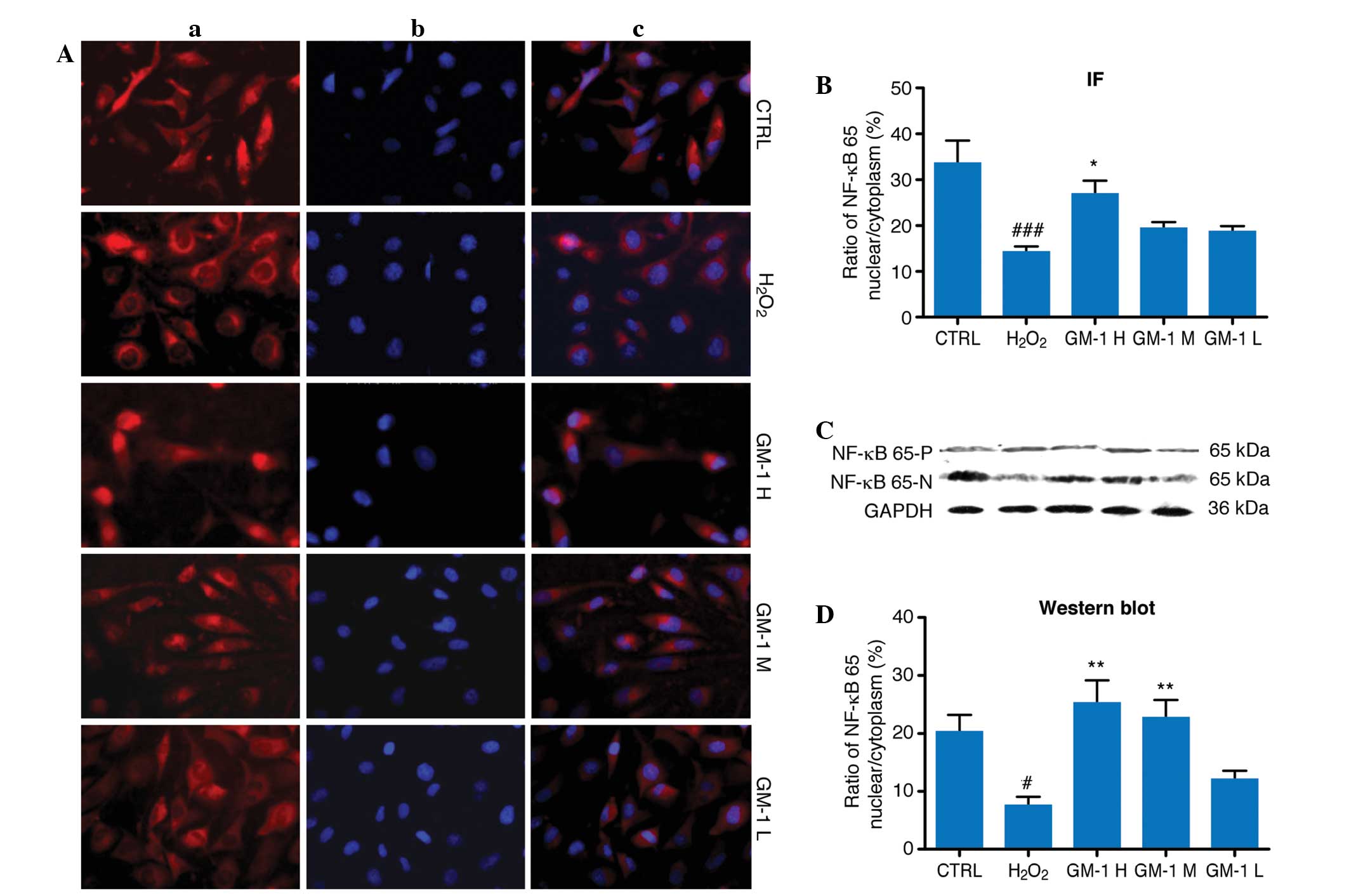|
1
|
Tessitore A, del P Martin M, Sano R, Ma Y,
Mann L, Ingrassia A, Laywell ED, Steindler DA, Hendershot LM and
d'Azzo A: GM1-ganglioside-mediated activation of the unfolded
protein response causes neuronal death in a neurodegenerative
gangliosidosis. Mol Cell. 15:753–766. 2004. View Article : Google Scholar : PubMed/NCBI
|
|
2
|
d'Azzo A, Tessitore A and Sano R:
Gangliosides as apoptotic signals in ER stress response. Cell Death
Differ. 13:404–414. 2006. View Article : Google Scholar : PubMed/NCBI
|
|
3
|
Mocchetti I: Exogenous gangliosides,
neuronal plasticity and repair and the neurotrophins. Cell Mol Life
Sci. 62:2283–2294. 2005. View Article : Google Scholar : PubMed/NCBI
|
|
4
|
Schwarzmann G, Hofmann P and Pütz U:
Synthesis of ganglioside GM1 containing a thioglycosidic bond to
its labeled ceramide(s). A facile synthesis starting from natural
gangliosides. Carbohydr Res. 304:43–52. 1997. View Article : Google Scholar : PubMed/NCBI
|
|
5
|
Zhang GZ and Li XG: Cerebral trauma,
Campylobacter jejuni infection, and
monosialotetrahexosylganglioside sodium mediated Guillain-Barré
syndrome in a Chinese patient: A rare case event. J Neuropsychiatry
Clin Neurosci. 26:E16–E17. 2014. View Article : Google Scholar : PubMed/NCBI
|
|
6
|
Hawryluk GW, Rowland J, Kwon BK and
Fehlings MG: Protection and repair of the injured spinal cord: A
review of completed, ongoing and planned clinical trials for acute
spinal cord injury. Neurosurg Focus. 25:E142008. View Article : Google Scholar : PubMed/NCBI
|
|
7
|
Masson E, Wiernsperger N, Lagarde M and El
Bawab S: Involvement of gangliosides in glucosamine-induced
proliferation decrease of retinal pericytes. Glycobiology.
15:585–591. 2005. View Article : Google Scholar : PubMed/NCBI
|
|
8
|
Frontczak-Baniewicz M, Gadamski R, Barskov
I and Gajkowska B: Beneficial effects of GM1 ganglioside on
photochemically-induced microvascular injury in cerebral cortex and
hypophysis in rat. Exp Toxicol Pathol. 52:111–118. 2000. View Article : Google Scholar : PubMed/NCBI
|
|
9
|
Suzuki Y, Nagai N and Umemura K: Novel
situations of endothelial injury in stroke - mechanisms of stroke
and strategy of drug development: Intracranial bleeding associated
with the treatment of ischemic stroke: Thrombolytic treatment of
ischemia-affected endothelial cells with tissue-type plasminogen
activator. J Pharmacol Sci. 116:25–29. 2011. View Article : Google Scholar : PubMed/NCBI
|
|
10
|
Touyz RM and Schiffrin EL: Reactive oxygen
species in vascular biology: Implications in hypertension.
Histochem Cell Biol. 122:339–352. 2004. View Article : Google Scholar : PubMed/NCBI
|
|
11
|
Liu L, Gu L, Ma Q, Zhu D and Huang X:
Resveratrol attenuates hydrogen peroxide-induced apoptosis in human
umbilical vein endothelial cells. Eur Rev Med Pharmacol Sci.
17:88–94. 2013.PubMed/NCBI
|
|
12
|
Suo R, Zhao ZZ, Tang ZH, Ren Z, Liu X, Liu
LS, Wang Z, Tang CK, Wei DH and Jiang ZS: Hydrogen sulfide prevents
H2O2-induced senescence in human umbilical
vein endothelial cells through SIRT1 activation. Mol Med Rep.
7:1865–1870. 2013.PubMed/NCBI
|
|
13
|
Liu DH, Chen YM, Liu Y, Hao BS, Zhou B, Wu
L, Wang M, Chen L, Wu WK and Qian XX: Ginsenoside Rb1 reverses
H2O2-induced senescence in human umbilical
endothelial cells: Involvement of eNOS pathway. J Cardiovasc
Pharmacol. 59:222–230. 2012. View Article : Google Scholar : PubMed/NCBI
|
|
14
|
Hong SW, Jung KH, Lee HS, Choi MJ, Son MK,
Zheng HM and Hong SS: SB365 inhibits angiogenesis and induces
apoptosis of hepatocellular carcinoma through modulation of
PI3K/Akt/mTOR signaling pathway. Cancer Sci. 103:1929–1937. 2012.
View Article : Google Scholar : PubMed/NCBI
|
|
15
|
Shi F, Wang YC, Zhao TZ, Zhang S, Du TY,
Yang CB, Li YH and Sun XQ: Effects of simulated microgravity on
human umbilical vein endothelial cell angiogenesis and role of the
PI3K-Akt-eNOS signal pathway. PLoS One. 7:e403652012. View Article : Google Scholar : PubMed/NCBI
|
|
16
|
Lu C, Ha T, Wang X, Liu L, Zhang X,
Kimbrough EO, Sha Z, Guan M, Schweitzer J, Kalbfleisch J, Williams
D and Li C: The TLR9 ligand, CpG-ODN, induces protection against
cerebral ischemia/reperfusion injury via activation of PI3K/Akt
signaling. J Am Heart Assoc. 3:e0006292014. View Article : Google Scholar : PubMed/NCBI
|
|
17
|
Li X, Zhang J, Chai S and Wang X:
Progesterone alleviates hypoxic-ischemic brain injury via the
Akt/GSK-3β signaling pathway. Exp Ther Med. 8:1241–1246.
2014.PubMed/NCBI
|
|
18
|
Choi SE, Kang Y, Jang HJ, Shin HC, Kim HE,
Kim HS, Kim HJ, Kim DJ and Lee KW: Involvement of glycogen synthase
kinase-3beta in palmitate-induced human umbilical vein endothelial
cell apoptosis. J Vasc Res. 44:365–374. 2007. View Article : Google Scholar : PubMed/NCBI
|
|
19
|
Doble BW and Woodgett JR: Role of glycogen
synthase kinase-3 in cell fate and epithelial-mesenchymal
transitions. Cells Tissues Organs. 185:73–84. 2007. View Article : Google Scholar : PubMed/NCBI
|
|
20
|
Wu HM, Lee CG, Hwang SJ and Kim SG:
Mitigation of carbon tetrachloride-induced hepatic injury by
methylene blue, a repurposed drug, is mediated by dual inhibition
of GSK3β downstream of PKA. Br J Pharmacol. 171:2790–2802. 2014.
View Article : Google Scholar : PubMed/NCBI
|
|
21
|
Eigler T, Ben-Shlomo A, Zhou C, Khalafi R,
Ren SG and Melmed S: Constitutive somatostatin receptor subtype-3
signaling suppresses growth hormone synthesis. Mol Endocrinol.
28:554–564. 2014. View Article : Google Scholar : PubMed/NCBI
|
|
22
|
Kim JM, Lee EK, Park G, Kim MK, Yokozawa
T, Yu BP and Chung HY: Morin modulates the oxidative stress-induced
NF-kappaB pathway through its anti-oxidant activity. Free Radic
Res. 44:454–61. 2010. View Article : Google Scholar : PubMed/NCBI
|
|
23
|
Urban MB and Baeuerle PA: The role of the
p50 and p65 subunits of NF-kappaB in the recognition of cognate
sequences. New Biol. 3:279–288. 1991.PubMed/NCBI
|
|
24
|
Howard EF, Chen Q, Cheng C, Carroll JE and
Hess D: NF-kappa B is activated and ICAM-1 gene expression is
upregulated during reoxygenation of human brain endothelial cells.
Neurosci Lett. 248:199–203. 1998. View Article : Google Scholar : PubMed/NCBI
|
|
25
|
Nurmi A, Lindsberg PJ, Koistinaho M, Zhang
W, Juettler E, Karjalainen-Lindsberg ML, Weih F, Frank N,
Schwaninger M and Koistinaho J: Nuclear factor-kappaB contributes
to infarction after permanent focal ischemia. Stroke. 35:987–991.
2004. View Article : Google Scholar : PubMed/NCBI
|


















